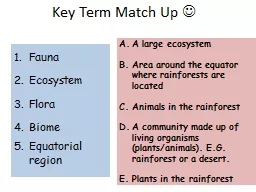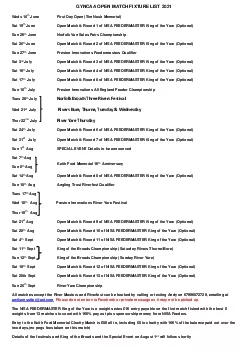PPT-Key Term Match Up
Author : luanne-stotts | Published Date : 2017-01-13
Fauna Ecosystem Flora Biome Equatorial region A large ecosystem Area around the equator where rainforests are located Animals in the rainforest A community made
Presentation Embed Code
Download Presentation
Download Presentation The PPT/PDF document "Key Term Match Up" is the property of its rightful owner. Permission is granted to download and print the materials on this website for personal, non-commercial use only, and to display it on your personal computer provided you do not modify the materials and that you retain all copyright notices contained in the materials. By downloading content from our website, you accept the terms of this agreement.
Key Term Match Up: Transcript
Download Rules Of Document
"Key Term Match Up"The content belongs to its owner. You may download and print it for personal use, without modification, and keep all copyright notices. By downloading, you agree to these terms.
Related Documents














